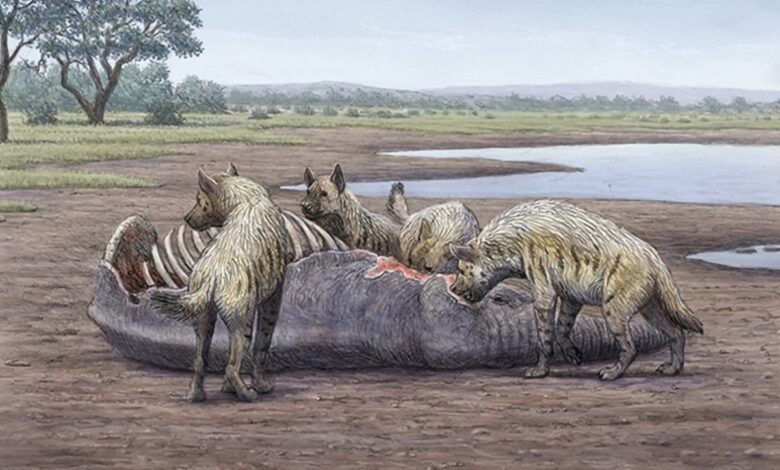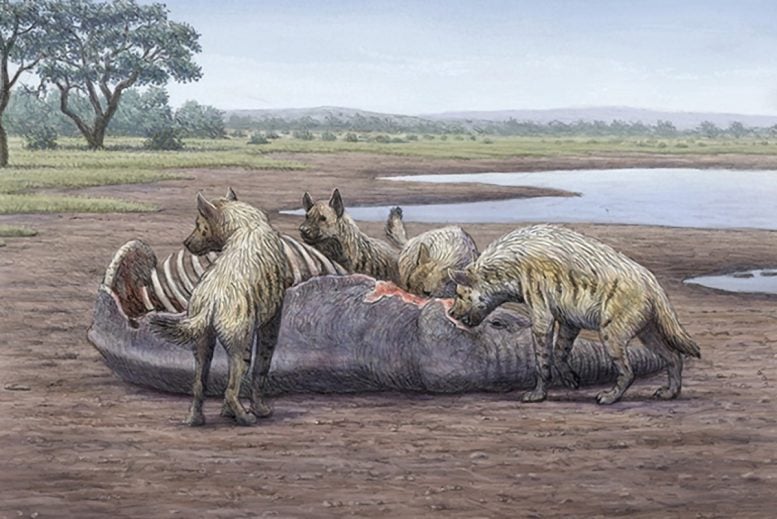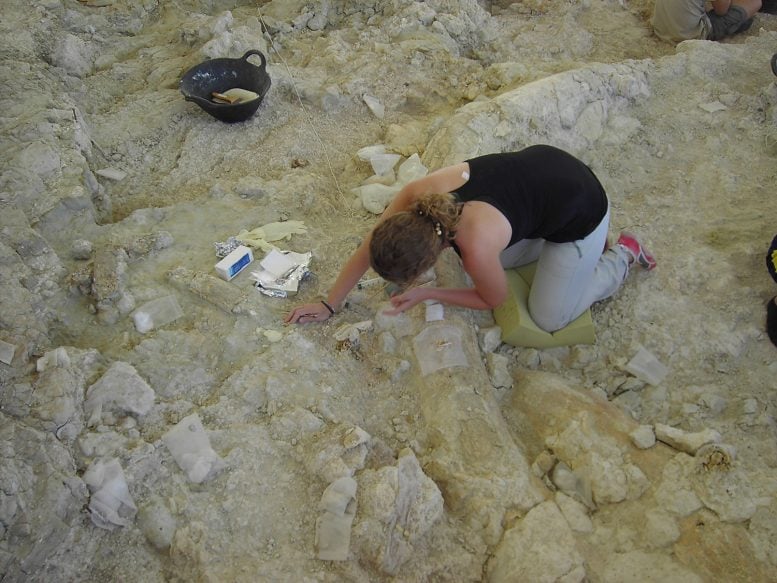1.4 Million-Year-Old Human Activity Unearthed at Orce’s Quicksand Trap


Research from the University of Malaga reveals that the Orce archaeological site functioned as a natural trap for large mammals during the Early Pleistocene, marking a significant site for human activity and survival strategies in Western Europe. Credit: Dibujo Mauricio Antón Hienas+Mamut-Color
Located at Fuente Nueva-3, this Early Pleistocene archaeological site hosts some of the oldest traces of human habitation in Western Europe.
Researchers at the University of Malaga have revealed, in an unprecedented manner, that the Early Pleistocene archaeological site of Orce, often referred to as the ‘elephant graveyard’ due to the abundance of remains from the extinct elephant species Mammuthus meridionalis, actually concealed a natural trap in the form of quicksand.
The site of Fuente Nueva 3 (FN3), located in the northeastern margin of the Guadix-Baza Depression (Granada), is one of the deposits of Orce that contains some of the earliest evidence of human presence in Western Europe –consisting of lithic assemblages, that is, stones carved by our ancestors– that is dated to one million four hundred thousand years ago.
Likewise, this archaeological site preserves manuports –unmodified stones used as percussion tools to fracture bones and access the marrow and, perhaps, also used as throwing weapons to scare away hyenas– and abundant fossils of large mammals, some of which preserve anthropogenic marks related to skinning, butchering, and marrow processing. And also bones with tooth marks caused by scavenging carnivores.
The results of this pioneering research have recently been published in Iberian Journal of Geology.
Two archaeological levels
According to this study, co-led by Full Professor of Paleontology at the UMA Paul Palmqvist and Professor of Stratigraphy and Paleontology at the UMA María Patrocinio Espigares, the fertile layers of this site have two different archaeological levels: lower (LAL) and upper (UAL). Both levels preserve abundant skeletal remains and lithic tools. However, while the first one shows a high density of manuports, which suggests that hominin activity was more intense at this level, the second one preserves many remains of megaherbivores, particularly, the extinct elephants Mammuthus meridionalis, which points to a greater involvement of the giant hyenas.

This study has been co-led by Full Professor of Paleontology at the UMA Paul Palmqvist and Professor of Stratigraphy and Paleontology at the UMA María Patrocinio Espigares
Thus, these scientists have analyzed the statistical differences in the composition of the faunal assemblages preserved in these two levels and the sedimentology, specifically the particle size in the fertile layers of both levels. The latter is a key aspect in the research, as it shows a predominance of silts and clays in layers 2-3 of the lower level, and fine and very fine sands in layer 5 of the upper level.
“These fine sand sediments, deposited close to the paleolake that was in the region, would also contain slightly saline water, a mixture that explains that they could have worked as quicksand, where larger animals were trapped,” said the UMA scientists.
Food for scavengers
Therefore, experts point out that the latter level may be interpreted as a natural quicksand trap in which megaherbivores were trapped due to the elevated weight of their limbs, and their half-sunken carcasses attracted the scavengers, both hyenas and humans, which fed on these and left their lithic assemblages and coprolites –fossilized excrement of hyenas– as evidence of their presence.
The new finding discovered by UMA researchers represents a “very important milestone to gain more knowledge about the subsistence strategies of our ancestors, the first Europeans, and their competition with the large carrion hyenas for access to these meat resources, since it is the first time a natural trap with these characteristics has been described in a fossil deposit of special interest to human evolution.”
Carrying out more detailed studies differentiating the upper and lower archaeological levels, as well as characterizing other important sites in the Orce region, such as Barranco León, which also contributes evidence of human presence, are the next steps planned by this scientific team of the UMA, in which researchers from the Complutense University of Madrid and Tarragona also participate.
More than a decade of UMA research in Orce
The University of Malaga has been researching the site of Fuente Nueva 3 for several decades. The first publication of the UMA that highlighted the significance of this place, in 2013, described a partial elephant skeleton surrounded in part by flint flakes and coprolites, attesting to the competition between these two super-scavengers for the carcass resources.
Reference: “The late Early Pleistocene site of Fuente Nueva-3 (Guadix-Baza Depression, SE Spain): a hyena latrine developed on a quicksand trap for megaherbivores?” by Paul Palmqvist, Isidoro Campaña, Alejandro Granados, Bienvenido Martínez-Navarro, Alejandro Pérez-Ramos, Guillermo Rodríguez-Gómez, Antonio Guerra-Merchán, Sergio Ros-Montoya, María Dolores Rodríguez-Ruiz, José Manuel García-Aguilar, Víctor Hernández and M. Patrocinio Espigares, 26 May 2024, Journal of Iberian Geology.
DOI: 10.1007/s41513-024-00241-1



